Blog Archives
Home -
Posts tagged "Transhumanist"
In an exciting breakthrough for research in animal communication, the SETI institute managed to
have the first ever conversation with a humpbacked whale. The SETI institute began as a NASA
research program to understand and search for life beyond earth. The Whale-SETI team is using the
mathematics of information theory to understand terrestrial, non-human communication as a way
to develop filters to apply to any communication with extraterrestrial life.
Humpback whales are social and intelligent creatures who make tools and communicate with songs
and social calls. The Whale-SETI team has been studying humpback whale communication, which
include “contact calls” that whales use to communicate their presence to other whales. The team of
scientists from the SETI Institute, UC Davis and the Alaska Whale Foundation played the contact calls
into the sea via an underwater speaker, and a humpback whale named Twain approached and
circled the team’s boat while responding in a style that matched the original contact signal. The
researchers managed to have a 20 minute conversation with Twain. It is the first known
“conversation” between humans and humpback whales. Humpback whales also display non-audio
communicative behavior when they blow bubble rings in the presence of humans.
Whale SETI may be viewed as a springboard for communicating with extraterrestrial life. However
communication with animals could have more immediate benefits for animals in our world, right
now. Whales are one of the marine creatures who are profoundly affected by human activity. Whale song is disrupted by the noise of ships. If we can communicate with non-human animals our decision making should consider them as equal participants.
Humans have erroneously viewed human communication as synonymous with superior intelligence.
Without the ability to communicate with other animals and with a so-called superior intelligence
human activity has rampaged throughout animal habitats without the consent of animals. Every step
towards understanding animal intelligence and communication provides further evidence that these
assumptions are wrong. Scientific knowledge should not dictate our respect for non-human animals,
however scientific discovery can provide a basis for progressive animal rights policy and zero
tolerance for cruelty towards non-human lives.
|
Tags: Animal Communication,
Animal Habitats,
Animal Intelligence,
animal rights,
Humpbacked Whale,
Kevin Boileau,
Marine Animals,
Nazarita Goldhammer,
Transhumanist,
Whale Communication,
Whale Song
Among the saddest and most cruel forms of torture animals humans have inflicted on animals is Bear Bile Farming. Bear Bile is used in traditional Chinese medicine. The process of extraction involves starving and dehydrating bears and extracting the bile through catheters and needles inserted into the gallbladder. Worse still, the bears are captured and confined to produce bear bile for the duration of their lives. This could mean up to 30 years of torture.
In the past, bears were killed and their gallbladders removed. Since the 1980s, the practice of bear bile farming took off. There are many synthetic and plant based alternatives that could replace this cruelly sourced extract, however bears are still kept in tiny cages for their whole lives to allow the extractions to take place. Bear bile farming is still legal in many countries. Korea, for example, still allows bear bile farming, though it has pledged to put a stop to it by 2025.
Vietnam is one of the countries that has banned bear bile farming but bear bile farms still exist there under the radar. It was on one of these farms that Paddington Bear, a moon bear, was kept for 17 years in a tiny cage where she was dehydrated and starved and her bile extracted. She was rescued by Animals Asia, but unfortunately she died less than a month after her rescue. Paddington Bear was dehydrated when she was rescued and suffered from multiple health problems typical of bears who are farmed for bile. These bears are often captured when they are bear cubs. They witness their mothers killed by poachers and are kept on bear bile farms for their whole lives where they are isolated and confined to the point that their bodies grow stunted to fit their tiny cages. Throughout their lives, they are tortured routinely with cruel bile extraction. The extraction of the bile leaves bears in poor health and causes many diseases and malignant tumors.
Paddington Bear was so close to living a better life, freed from the farm where she spent 17 years. Unfortunately, her health problems were overwhelming. She didn’t get to enjoy a healthy, peaceful retirement at her new home, but with renewed efforts to end the practice of bear bile farming, other bears may never have to go through what she did.
To learn how to end bear bile farming and help to rescue bears kept on bear bile farms, please visit Animals Asia’s website:
https://www.animalsasia.org/us/media/news/news-archive/five-things-you-need-to-know-about-bear-bile-farming.html
|
Tags: Animal Abuse,
Animal Cruelty,
Animal Rescue,
animal rights,
Animals Asia,
Bear Bile Extraction,
Bear Bile Farming,
Kevin Boileau,
Nazarita Goldhammer,
Transhumanist,
Wild Animals
Last year when the world was struggling to find a solution to the global COVID-19 pandemic, researchers who were testing on animals moved quickly to human trials and conducted some of the fastest ever research using human trials. The vaccines were ready for rollout 6 months later.
This is not a normal timeline. Usually, animals are tested on and suffer for years in clinical trials before drugs and treatments are deemed safe to test on humans. Yet in 2020, somehow it was possible to speed up development and cut out years of animal suffering.
Also in 2020, animal testing dragged on even though the vaccines were showing promising results in humans. There was a “monkey shortage,” as labs rushed to perform unnecessary tests on rhesus macaques who were imported over great distances to suffer in labs and then be euthanized.
Over 100 million animals die during animal tests every year according to PETA. One reason so many animals are killed in the US is that animal testing is simply a bureaucratic requirement to receive drug approval, according to this blog.
And of course, animal testing is also big business. The demand for animals in research is subject to predictions and betting about how much money it’s worth, just like any other market. The so-called “monkey shortage” is yet another way humans reveal the value they place on animal life. Animals are a commodity to serve humans, not living beings.
PETA has an informative list of reasons why animal tests are unnecessary and cruel. One of the reasons is the abject failure of many treatments and drugs tested on animals when they are tested on humans. It is an inexact science to compare human and animal biological systems, and some of these tests even harm humans. The thinking seems to be to just throw any research at the problem and see if it sticks. The excuse for being able to do things this way is the underlying belief that animals are disposable.
Please check out this PETA list of reasons why animal testing isn’t necessary and why other testing methods are becoming the norm: https://headlines.peta.org/end-experiments-on-animals-for-covid-19/
Read More:
https://www.bignewsnetwork.com/news/268699398/animal-model-market-driven-by-developments-in-pharmaceutical-and-crispr-genetic-research-opines-factmr
https://insidesources.com/there-is-no-monkey-shortage-for-covid-19-research-because-no-monkeys-are-needed/
https://www.usatoday.com/story/news/health/2020/09/10/covid-vaccine-treatment-trials-create-monkey-shortage-science/5714115002/
Higher intelligence in animals, the ability to know your own thoughts and have self-consciousness is traditionally thought to be rare and mostly confined to humans. Humans have made this assumption for one simple reason which turns out to be, actually, not that smart. The reason many animals, such as birds, have been assumed not to have the higher intelligence of humans is that the six layered structure of the neocortex or forebrain is believed to be what gives humans, above all animals, intelligence and a sense of self. However, new research shows that pigeons and barn owls have neurons connected at right angles creating columns of connected neurons. The conclusion is that it doesn’t matter what structure is formed, super connectivity in a highly active part of the brain is likely the thing that gives rise to higher intelligence, not a particular “type” of brain.
Crows have a particularly large fore-brain and have long been known to be intelligent. New research demonstrates that crows are thinking of their own experience when they are asked to indicate whether they saw a flashing light in an experiment. Crows have been known to recognize faces, hold grudges, solve puzzles and use tools.
Birds resemble humans much less than great apes and other mammals. Perhaps this is why we are so surprised that they could possibly have consciousness, a sense of themselves and their fellow beings (crows are also known to hold funerals). But, as research now shows, this says a lot more about human bias than about the intelligence of birds.
Read More:
https://www.livescience.com/23090-crows-grudges-brains.html
https://www.statnews.com/2020/09/24/crows-possess-higher-intelligence-long-thought-primarily-human/?fbclid=IwAR0ScB6EyC9G7AS3YQsmdFh0YGDsPD2549Etj32aHCBrHGmc1FAXngNv-yE
https://www.livescience.com/53283-why-crows-hold-funerals.html
Mountain lions in California are isolated, dejected, without chance of finding a mate and vulnerable to poisoning, death on highways and deliberate targeting by humans. That is the picture painted by this LA Times Article, ahead of a major decision by the Fish and Game Commission that went in favor of Mountain Lions. The Fish and Game Commission have decided to review the Mountain Lions’ Endangered status over 6 years and afford them certain protections in line with this. The article delves into the ways Mountain Lions should be protected. While these considerations apply to Mountain Lions, it would be even better if some of the protections could be universally applied to protect wild animals in shrinking habitats encircled by human development.
One suggestion the article makes is that highways should not restrict Mountain Lions’ Movements. It seems a no-brainer to require green overpasses for all animals in highway development plans. The needs of wild animals to roam freely and seek food and better conditions are fundamental. Animals may not be imprisoned in Wildlife Parks but encircled by “highways of death” they may as well be.
Then there are poisons. Poisoning animals that are considered pests doesn’t just kill them in an inhumane and horrible way, it also risks the life of any other animal happening upon this poison, whether by predation or by other exposure. Poisoning “pests” is the equivalent of planting landmines in wild animals’ natural habitats. Raptors like owls, for example, are much more likely to die from anticoagulant rodenticides. These poisons induce fatal bleeding in animals. It is an unthinkably cruel way to die.
The only reason people are starting to wake up to this inhumanity is that their own pets are sometimes killed by poisons. The sad and difficult lives of Mountain Lives tell a much bigger story about life for wild animals who are forced into exile on the borders of human habitats.
Read More:
https://www.sanluisobispo.com/news/local/environment/article243374736.html
https://www.sacbee.com/news/california/article237937419.html
https://messengermountainnews.com/mountain-lions-win-major-victory-at-fish-and-game-commission-meeting/
https://www.latimes.com/opinion/story/2020-04-15/mountain-lions-protection-freeways-rat-poison-property-owners
There are times when a death toll goes so high that the significance of numbers is nothing but the complete loss of their significance. No longer are numbers able to speak of the loss of the individual to a community, to a family, to a habitat. The only thing they are able to speak of is the loss of meaning, the incalculable damage done to life itself. When we hear of a human death toll – a disaster, a massacre — the number of dead hits us like a blow to our sense of individual destiny: the right we think we have to thrive, to matter. The dead are like a wave that sweeps across our consciousness, constantly overwhelming our efforts at recognition, at the distinction we humans find between ourselves and others, our environment. We are connected with others in our helpless masses, no longer as helpers or community members, but as mere victims. The numbers stand while we fall, unable to resist the magnitude, the amplitude of the loss.
The numbers of estimated animal dead in Australia cannot be compared to a human village, nor a town, nor even a nation. Instead, the numbers of estimated animal dead in Australia’s fires make up one eighth of the world’s human population today. This animal death toll doesn’t even include frogs and insects.
As humans, we work among the ruins of our own disasters to regain our personal significance. We cling on to activity: gestures of solidarity, statements about change that are as much made to feed the ego as to stake out a real commitment. We reassure ourselves that we are individuals, that we matter. In the wake of Australia’s fires, humans feeding baby koalas and wrapping them in blankets are broadcast as a signal of activity that fills the void of disaster. They speak of our ability to care, to matter, as helpers and agents for animals. Despite the great good of these activities, they do not speak of the loss and grief of animals themselves, nor of their situation as displaced individuals and families who have been devastated by Australia’s inadequate climate change policy.
The animals who have survived have lost their family members and in some cases their entire habitats or livelihoods. The best known example is the Koala, which has been decimated by the fires on Kangaroo island. These koalas had represented a sanctuary and a reserve, protected from the chlamydia that has kept other koalas from reproducing successfully. There are questions over whether a small marsupial which lives its life shielded from danger in greenery has any real shot of sustainable existence in its hollowed out home on Kangaroo island.
We humans imagine death from fire as striking these animals with explosive might, but before the fires, animals were already dying of exposure to intense heat. Birds were dropping out of trees. Animals were starving because their food supplies were drying to a crisp. The fires that have grabbed human attention have left animals homeless. Those who have survived and haven’t received medical attention are enduring great suffering from hunger and injury. The Australia fires have unearthed a world of animals who carry on their lives whether we notice or care or not.
We need to follow the story of animal lives beyond this crisis as they now evade opportunistic predators like feral cats, as livestock dead create bio-hazards for animals, as they move about and use their ingenuity to survive but often fail to make it. Animals, like humans, do what they can to survive, including sheltering together in wallaby burrows. Heroic working dogs have rescued animals from fires. The sight of injured animals, baby koalas clutching stuffed animals, should remind us that other species have their own emotional needs and communities. Everyday animal lives, not human heroism, are the ignored clues to helping animals and working alongside them. For example, it should have been clear by damage from the heat wave in Australia, and by animal behavior, that climate change disaster was already preying upon the animal population. The fear is that California “will be next.” The sovereignty of animal lives needs to be consistently observed and recognized outside of disaster scenarios. Waking up to animal sovereignty, animal pain, animal solidarity can transform the death of animals from a number into an accountability for the loss.
The rescue efforts are not going to stop when the fires start to disappear from the headlines. This article has some information on how to support the rescue efforts going on: https://www.cnet.com/how-to/australia-fires-have-killed-more-than-a-billion-animals-so-far-how-you-can-help/ However, ongoing donations to animal conservation organizations such as the World Wildlife Federation are needed indefinitely. Commitments to fight climate change and move away from animal exploitation and death are needed Right Now.
https://www.latimes.com/environment/story/2020-01-14/australia-fires-killed-millions-of-animals-kangaroo-island
https://www.cnet.com/how-to/australia-fires-have-killed-more-than-a-billion-animals-so-far-how-you-can-help/
https://www.nbcnews.com/science/environment/more-1-billion-animals-killed-australian-wildfires-n1112326
There is a qualitative difference in how we talk about animal vs. human abuse. That also translates into how we punish animal abuse. A man from Missouri has been released into house arrest after he tortured and killed at least 12 cats that he brought from craigslist for the specific purpose of killing and torturing them. The man revealed that he enjoyed stamping on the heads of cats and killing them by strangling them. He seemed to enjoy victimizing a wide variety of cats. He used craigslist to obtain mother cats, baby kittens and adult cats. Craigslist was this man’s a la carte menu of victims, a way he could easily gain access to a variety of animal victims to appease his violent appetites.
The man is considered a violent animal abuser and faces felony animal abuse charges. This pattern of killing and abuse seems deeply ingrained, to the extent that he will probably always be a danger to animals, and even humans. There is a petition urging the St. Charles County prosecuting attorney to prosecute the man to the fullest extent of the law and require extensive psychological intervention. If this man had abused and killed humans, he would be considered a dangerous serial killer. Unlike with a serial killer, however, this animal murderer will be free in the future to hurt animals and humans too. The max sentence for animal cruelty rarely stretches beyond five years. Several studies and the FBI have found a correlation between animal cruelty and the crimes of serial killers and rapists. Animal cruelty still ranks below cruelty to humans even though it is an equivalent violent crime, as perpetrators harm humans too.
The other side of this issue is that craigslist is effectively allowing animals to be trafficked by allowing them to be listed on their website without protections. There’s no guarantee that animals listed through craigslist will go to a good home. The fact that animals can be listed on craigslist indicates how low animal life is valued in the first place. Serial killers and abusers can obtain animals like they are property (as they’re considered by the law), and treat them like objects to be defiled. The ease with which this animal serial killer could torture and kill animals shows how much work there is to be done on the issue of sheltering animals from abuse and taking animal abuse seriously as the horrific violence that it is.
Read more about this issue, share the petition, and read about why you should never list animals on craigslist.
https://en.wikipedia.org/wiki/Cruelty_to_animals
https://www.humanesociety.org/sites/default/files/docs/state-animal-cruelty-chart.pdf
https://www.thoughtco.com/dont-give-pets-away-free-127759
There is a lesson the public has learned from recent videos of cows being violently abused on Martin’s Farms, and it’s not what you think it might be. The videos of cows are an awful spectacle that has caused Martin’s Farms to fire employees in a show of remorse and responsibility. The real lesson however is that accountability for animals’ suffering is based on the martyrdom of animals rather than concern for them. The lesson is that animals have to be hurt and to suffer before action is taken. There’s a reason for this: many dairy farms throughout the US are inspected by milk co-ops, i.e. the dairy industry itself. Farms overseen by the Maryland and Virginia Milk Co-Op (including Martin’s Farm in Pennsylvania), don’t even make inspections public record. Is it any wonder that action is only taken when it’s too late, since the dairy industry has no incentive to prevent or stop abuse? Firing workers and apologizing is not the same as systematic change and it won’t take back the suffering of the animals.
Let’s return to what happened to the dairy cows at Martin’s Farms. Cows at Martin’s Farms were punched kicked, stomped on, blasted with scalding water to make them move. An operation was performed on a cow without anesthetic. Another cow was shot with a bullet in a botched, brutal killing and then shot a second time when it didn’t work. It’s easy for humans to rest comfortably in delusions that make us feel better, that this video showed unusual cruelty, and that justice has now been done. Unfortunately it’s very likely that cruelty like this is happening at other farms, right now, with no oversight. Accountability is one thing, but that can only happen with care, concern and oversight. For animal suffering to be prevented, humans need to stop indulging in outrage and “justice” and start protecting animals over industry. Please read, share and take action:
https://forcechange.com/530234/dairy-cows-reportedly-tortured-and-abused-deserve-justice/
https://wjla.com/features/7-on-your-side/inspecting-animal-welfare-on-dairy-farms
This film is a very good example of [Christian] humanistic beliefs about the nature of human beings, and the deep ontological assumption of ontological [dis]parity. In this way of thinking we see hierarchies everywhere, with only the bishops, the Pope, angels and God outstripping the value of humans, and people of some color and gender of greater value than others. Most people cannot see a new Archimedean point of view, in which this “worlding” is replaced by one with a much more justifiable moral construction. In this film, we see dolphin families destroyed, their members vocalizing terror, puzzlement, and and deep grief. Some of the dolphins are hauled to the pier and chopped to pieces as they lie dying. Others are sold to Russian and Chinese aquariums, forever imprisoned until they die. There is nothing about this practice that is morally redeeming and, in the converse, it shows how little evolved humanity is. You should also know that Japanese “scientists” have been regularly capturing Antarctic whales for the purpose of “knowledge” when, in fact, they are taken as food.
This practice is analogous to others, in which we use animals for entertainment, clothing, food, “research,” and sexual gratification in ways that are demeaning, abusive, harmful, torturous, sadistic, and vile. Some people argue that it is our “natural” right but this is another deception by fiat. The truth is that we are a violent species, narcissistic, “speciesist”, egocentric, and capable of generating outlandish arguments that purport to serve our best interests–that our best interests always outweigh the interests of the Other. We have this way of thinking within the human population as well, as I mentioned before: power underwrites knowledge, truth and morality. Yet, we colonize other races, and colonize other species in exactly the same way with the same kind of thinking.
When we truly excavate our thinking, we always find the hidden treasure – the deep assumption – that we believe we are of greater ontological worth and value than individuals of other species. We do it with lions and tigers, wolves and bears, domestic dogs and cats, marine life, and the rest of them. “Tolerance”, moral relativism, and moral subjectivism were the worst–and least plausible philosophical positions ever proffered, for they operated as defenses against some of the most atrocious behavior we have seen. Unfortunately, tolerance is the sign of a weak person and a weak culture. It is one of the greatest deceptions ever. We must not be tolerant. Instead, we must use our reason to think–critically–about our behavior, and someone else’s. This does not mean we ought to opt for vicious objectivisms either, for they are on the other wrong side, and have as their bulwark the psychopathology of capitalism, complacence, the dangers of [Zizekian] hysteria, and claims to truth that are always underwritten by power.
Thus, this film can enlighten us to our savage Japanese cousins, but hopefully wake us up to our own “peccadilloes.” Shooting coyotes to make fancy runway Canada Goose jackets for the rich; shooting grizzly bears from fear; setting bait for wolves [near Stevensville] laced with broken glass and strychnine]; injecting primates with Ebola viruses in the lab at Hamilton; forcing elephants to give you a a circus ride, or tigers to jump through fire or be beaten; fucking dogs that have been forced into prostitution; setting cats on fire; engaging in absolutely irrational animal-model research then often usually killing and throwing the subjects into the garbage; imprisoning cows, raping them, preventing their young from suckling, then selling cheese, milk, and ice cream cones to the hoi polloi while we murder males for veal and start raping the females all over again; racing horses then herding them into the Killbox for their “meat; finding “humane” ways of raising cattle and slaughtering them to the tune of decades of poisoned water, noxious carbon and methane, and workers who suffer almost 100% PTSD for being the agents of violence.
The Anthropocene. What gets me is that some folks who are hailed as brilliant geniuses in this ontological order show up as as imbeciles in another. Moreover, even though the fallacy of the false dichotomy, the fallacy of oversimplification, and the either-or fallacy ought to be avoided, we must also avoid their dark cousin, the fallacy of obfuscation, in which we intellectuals hide inside words without fully participating in our “god-given” interrelational self, which requires us to overcome the false belief that we are at the center of anything, the masters of anything including discourse, and that from universities spring truth and goodness.
The most difficult task for any of us to is to see the Other – the radical Other – outside of our own mental categories to which we cling like children. And thus, without poiesis we will continue to be lost at sea, just like these dolphins who are slaughtered because they “belong” to us – another fallacy. The only enjoyment I get is knowing that humans will “get theirs.” This is natural justice, a deep algorithm that underwrites true natural rights.
The Cove: https://www.imdb.com/title/tt1313104/
Let’s imagine that humans meet a superior species – stronger, smarter, and more vile than we are. They chain us, train us, experiment on us. They force us to entertain them, and they hold us captive for rape. They hunt us, trap us, and take pictures of us when we have been “harvested.” They cut us into pieces, tear our skin from us, throw us into boiling water, and make words about ecosystems, wildlife management, and the “natural” way of things. Then we will finally ponder ontological parity, virtue, empathy – making all sorts of “moral” claims about justice and fairness. In response, some won’t care, some will cut with greater precision, some will ignore us, and others will laugh, sadistically. Our bourgeois universities will “smoke” their books with more intensity until they, too, perish in the Great Annhilation – the New Holocaust. Then, there will be others who awake to the truth of things and realize that our dream of fertility, Western expansion, colonialisms, violence, and eugenics is truly what we have known all alone – a National Socialist nightmare that is coming to your door.


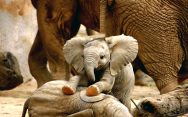
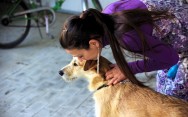

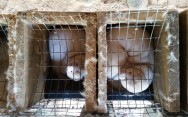
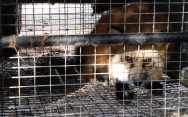
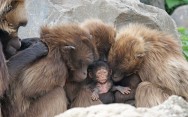
Social Media